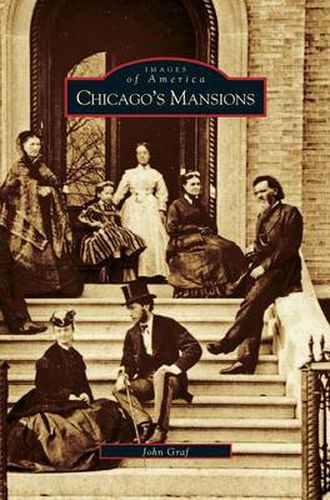Readings Newsletter
Become a Readings Member to make your shopping experience even easier.
Sign in or sign up for free!
You’re not far away from qualifying for FREE standard shipping within Australia
You’ve qualified for FREE standard shipping within Australia
The cart is loading…






This title is printed to order. This book may have been self-published. If so, we cannot guarantee the quality of the content. In the main most books will have gone through the editing process however some may not. We therefore suggest that you be aware of this before ordering this book. If in doubt check either the author or publisher’s details as we are unable to accept any returns unless they are faulty. Please contact us if you have any questions.
Chicago is known throughout the world for its architecture. Although many people are familiar with the city’s skyscrapers and public buildings, they often overlook or are unaware of Chicago’s mansions that are located throughout the city. These mansions represent Chicago’s past and its future, and it can even be said that they are the very embodiment of Chicago and its architecture. These fashionable residences were built to make a statement, and what better way to have done this than to employ the leading architects of the time to design them. These architects included men such as Louis Sullivan, Frank Lloyd Wright, Henry Hobson Richardson, Daniel Burnham, and John Wellborn Root. While the city’s mansions are significant because of who built them, they are just as important because of who lived in them. Many of these mansions were built for Chicago’s elite businessmen and captains of industry-men who represented old money, new money and big money. Just as important were the families of these men and the other residents who came to live in these mansions-for they left a legacy of their own that contributed to the city’s history.
$9.00 standard shipping within Australia
FREE standard shipping within Australia for orders over $100.00
Express & International shipping calculated at checkout
This title is printed to order. This book may have been self-published. If so, we cannot guarantee the quality of the content. In the main most books will have gone through the editing process however some may not. We therefore suggest that you be aware of this before ordering this book. If in doubt check either the author or publisher’s details as we are unable to accept any returns unless they are faulty. Please contact us if you have any questions.
Chicago is known throughout the world for its architecture. Although many people are familiar with the city’s skyscrapers and public buildings, they often overlook or are unaware of Chicago’s mansions that are located throughout the city. These mansions represent Chicago’s past and its future, and it can even be said that they are the very embodiment of Chicago and its architecture. These fashionable residences were built to make a statement, and what better way to have done this than to employ the leading architects of the time to design them. These architects included men such as Louis Sullivan, Frank Lloyd Wright, Henry Hobson Richardson, Daniel Burnham, and John Wellborn Root. While the city’s mansions are significant because of who built them, they are just as important because of who lived in them. Many of these mansions were built for Chicago’s elite businessmen and captains of industry-men who represented old money, new money and big money. Just as important were the families of these men and the other residents who came to live in these mansions-for they left a legacy of their own that contributed to the city’s history.